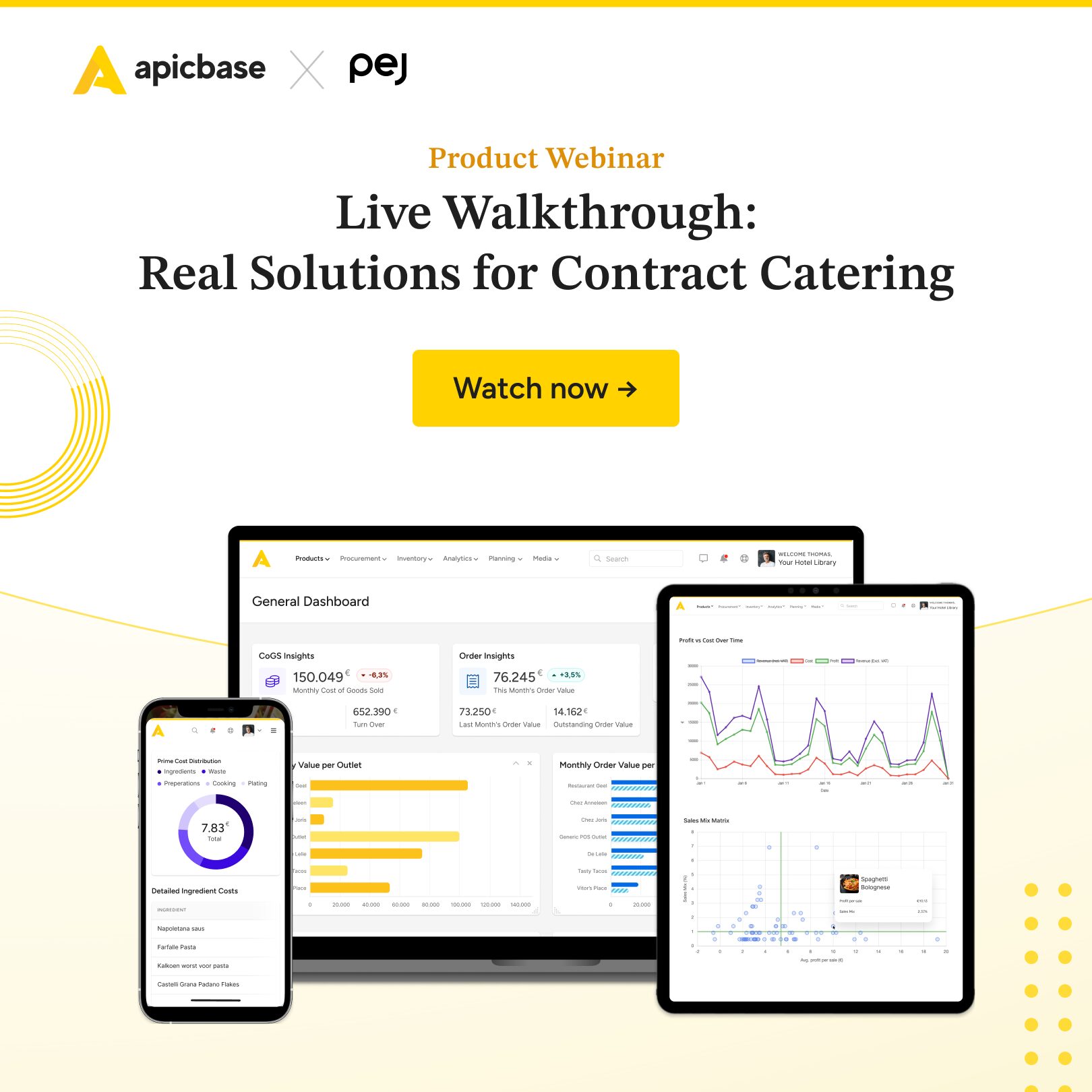APIs are game-changers for the restaurant industry and its pursuit of digital transformation and data-driven operations.
In this article, we explore how APIs work and their applications and benefits for the restaurant industry.
In an industry increasingly dominated by digital tools, APIs connect the growing number of data sources into one unified ecosystem.
Technology is swiftly invading people’s daily lives. The adaptation of business owners to new technologies accelerated in the last 3 years. The COVID-19 crisis compiled years of change into just a few months.
According to the McKinsey Global Survey of Executives, “companies have accelerated the digitization of their customer and supply-chain interactions and of their internal operations by three to four years” since the pandemic took place.
Digital transformation and digitalisation in the restaurant industry are here to stay. The way new technologies transformed organisations and consumer behaviour didn’t go unnoticed.
In 2021, “91% of restaurants have made or planned to make investments in kitchen automation technology“, according to Business Insider. Before that, it was hard to find someone in the restaurant industry who knew what an API was. These days, restaurant owners realise that the process of selling great food in a great location is only part of running a successful restaurant.
APIs already form the backbone of numerous restaurants.
API definition
API stands for Application Programming Interface. An API is an interface that connects several software systems in a single place. It facilitates the secure transmission of data and information between different software applications.
All in all, an API connects the systems and departments of a restaurant, enabling a more accessible and more organized management process.
Some APIs used in the restaurant industry are focused on production, stocktaking, procurement, and the customer-facing apps. With a well-functioning system in place, the connection between the different areas of a restaurant is optimised and contributes to the restaurant’s productivity.
Here’s why:
APIs in the Restaurant Industry
An API is the heart of an establishment. It is the core of restaurant management, connected to all sorts of departments, from procurement, to accountancy, to menus or reservations.
Usually, restaurants already have existing and working integrations in place, like deliveries or accessibility, so it can often be challenging to integrate and have them all in sync with one another.
With an API, every system, device, integration, or platform is connected and working all in one place. Here are some examples of what an API can provide for a restaurant:
Analytics measurement and KPIs
By measuring KPIs and stored performance data, an API can help restaurant owners set realistic targets and objectives for their establishment and team based on data evolution. It could go from receiving zero customer complaints to measuring the price average per table during peak hours of the service.
Internal and external engagement
In-house and external commitment are crucial aspects to take into consideration when managing a restaurant, for a motivated and well-equipped team and a loyal customer can be drivers of a restaurant’s performance.
A recent restaurant study shows that 64% of consumers choose to spend more at a restaurant they trust, so a way for a restaurant to guarantee this is by studying their customers’ data and storing it in a single platform to guarantee easy access.
Everyone on the team should have access to the API and be up-to-date with every automatization and data exchange, improving the overall efficiency of the business. This integration across value chains enables a faster pace of interaction with the customers.
From data gathering to classifying their preferences to products and services they like across a wide range of channels and devices, the restaurant’s customer experience can be significantly improved.
Automatisation of Management and Operations
Orders, menus, reservations, events, customers, procurement, and payments are tasks that take time, and time is money in the restaurant industry. Through the automation that an API offers, less human effort is required, and workflows can be easily and more efficiently updated. The advent of cloud-based POS systems that use APIs to handle transactions guarantees also contributes to time savings because local storage systems no longer require standalone BOH systems.
Marketing Integrations
There are APIs that even offer marketing integrations that increase restaurants’ visibility and make them stand out from the competition. From review management to content or ads, these integrations can add value to a restaurant’s brand building. Some are even equipped with review and online presence management systems that boost establishments’ online presence.
In conclusion
Seeing that technology is rapidly settling in the restaurant industry, studying different types of adaptations and advancements can be substantial for any business owner in the sector.
With all their integrations and usages, APIs constitute the backbone of any digitalization efficiency process and are potentially set to improve considering their rapid takeover and usability. This can only benefit restaurants seeking to save time, and increase revenue and effectiveness, pivotal factors of higher durability and profitability.
For this and the above-mentioned reasons, it is worth considering APIs as game-changer innovations within the restaurant industry. Lastly, try the Foodetective service: buy one and get one bundle free.
. . .
Andrea Tassistro, Co-founder & CEO of Foodetective


